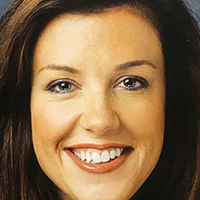September 01, 2022
Are Suppliers Prepared for the Holiday Selling Season?
While challenges persist, suppliers are in a better position to meet Q4 demand thanks to factors like deeper inventory and improved staffing levels.
Double.
That’s approximately how much more inventory SanMar (asi/84863) believes it will have stocked and ready for sale in North America at the start of 2022’s fourth quarter compared to last year’s Q4.
“Our inventory has been growing week by week,” says Pat Noonan, chief product officer at Issaquah, WA-headquartered SanMar, the promotional products industry’s largest supplier. “We’re in a much stronger position than we were a year ago.”
So, too, are other suppliers in the promo market, executives assert.

For sure, the situation is far from perfect. Challenges stemming from supply chain, inflation and labor constraints continue to press upon suppliers. Still, many say they’re on better footing than last year to meet the end-buyer demand that typically surges during the holiday selling season.
The positive change, they say, is the result of having deeper inventory, as well as improved staffing levels and enhanced processes that will help power more efficient production/fulfillment and quicker, more responsive customer service.
“PCNA has backed inventory investments with labor and equipment to make this our best year ever and deliver our promise to delight our customers,” says Liz Haesler, chief global merchant at New Kensington, PA-based Polyconcept North America (PCNA, asi/78897), promo’s fourth biggest supplier.
Haesler continues: “2022 will reflect the largest embroidery capacity we’ve had at PCNA, which will be reflected in our fulfillment times.”
Inventory Improvements
Suppliers experienced glaring stock gaps in 2021. Inventory levels suffered due to supply chain problems that included COVID-driven factory shutdowns overseas, port congestion, shipping delays, raw material availability, rail and trucking back-ups, depleted labor pools and other factors. The dearth of inventory became especially pronounced in the latter half of the year as demand boomed and buyers gobbled up available stock.
While the inventory situation has improved in 2022, anyone active in the industry could confirm that it has remained a significant friction point. Continued kinks in the supply chain have presented impediments to the full-scale re-stocking that many suppliers would consider ideal.

“Our inventory has been growing week by week. We’re in a much stronger position than a year ago.”Pat Noonan, SanMar
“Across the industry, inventories are in better shape than in early 2022, but still far from normal, with plenty of gaps depending on the product or country of origin,” says Jose Gomez, president of Kalamazoo, MI-headquartered Top 40 supplier Edwards Garment (asi/51752).
Even so, top suppliers insist they’re stocking up as amply as possible to meet anticipated demand.
Executives say they’ve taken a proactive approach that has centered, in part, on ordering more product farther in advance than would have been the norm before the COVID-19 pandemic. It’s led to promotional products inventory levels growing at supplier warehouses throughout North America. Specifics can vary from supplier to supplier and undoubtedly there’s room for industry-wide improvement, but the inventory enhancements are real – and a boon for distributors and their customers.
“We’re continuing to rebuild our core inventory and each month it improves,” says Joel Freet, CEO of Renton, WA-headquartered Top 40 supplier Cutter & Buck (asi/47965). “We could use more stock than we’re able to secure, but we have a great balance of products in each category.”
It’s a similar story at SanMar.
“We’re working to get where we need to be,” says Noonan. “There do remain holes in basic T-shirts and in stock from our retail brand partners. But we’re committed to rebuilding our inventory and we’ve made a lot of progress. We’re especially deep in cold weather categories like fleece, outerwear and blankets.”

“We currently have significantly more inventory than in 2019, and our lowest out-of-stock in the company’s history.”Liz Haesler, PCNA
Haesler reports that PCNA has made large-scale investments in inventory.
“We currently have significantly more inventory than in 2019, and our lowest out-of-stock in the company’s history,” she shares. “We have bet big on the items we believe will be most desired this holiday season. We’ve adjusted our port strategy to ensure we are doing everything we can to deliver products on time.”
Believing supply chain-related delays would drag on throughout 2022, Clearwater, FL-based Top 40 supplier Koozie Group (asi/40480) began making a concerted effort earlier in the year to bring in inventory in advance. That’s helped firm up stocks for Q4, says Pierre Montaubin, senior vice president of product management and sourcing.
“We’re well-positioned across the board when it comes to sourced products,” Montaubin asserts. “Additionally, we benefit from our vertical integration in both writing instruments and calendars, which we produce domestically. Talking with supply chain industry colleagues recently, I believe everyone has been watching the situation closely, adjusting inventory levels and safety stocks to compensate for the longer lead times and the current growth our industry is experiencing.”
Certainly that has been part of the strategy at Edwards Garment.
“Our inventory levels are healthy, balanced and ready for the rest of 2022, thanks to aggressive purchasing in late 2021 and earlier this year,” says Gomez. “We strategically placed higher-than-usual inventory levels in some of the best-selling products to be ready for demand spikes in Q3/Q4. Our sourcing and inventory planning strategy has been focused on being diversified and balanced on the origin of our products. This diversification has provided us with stability to stay adequately stocked and avoid unexpected delays.”
The Word on Production & Fulfillment
Having stock is one thing. Getting it out the door and delivered is another. Due to issues like inadequate employee levels and uncontrollable delays with delivery providers, promo’s order fulfillment times lengthened in 2021, a problem that was particularly acute in the mad dash of last year’s fourth quarter. Order inaccuracies also increased.
Making end-client in-hands dates with accurate orders has continued to be a hurdle in 2022, but top suppliers believe they’re better prepared to meet crunched promotional products industry Q4 deadlines and assist distributors this year than during the previous holiday season. One reason for that, some suppliers report, is that they’ve been able to hire and train more production and customer service staff compared to 2021’s fourth quarter.
Admittedly, employee counts may be below what suppliers want – often a result of continued tightness in the labor market. Nonetheless, there have been improvements that should tell in service, executives say.
“We’re seeing improvements in production times because of having stock on hand, as well as an easing of labor shortages,” says Montaubin. “I expect stability or slight improvements in Q4, depending on demand.”
Q4 Selling Quick Tips for Distributors
Educate & Present Options: While inventory depth has improved, there can still be stock gaps and shortages. Educate clients about this and present multiple product options. Partner with suppliers for help with sourcing alternatives.
Order Early: Even with more inventory, there’s only so much stock. And even if production/fulfillment times are accelerated relative to last year, orders may still take longer to bring to fruition than may have been the norm pre-COVID. Talk to customers about this and work with them to get their Q4 orders in as early as possible.
“Like last year, we recommend distributors book their orders as soon as they can,” says Andrea Lara Routzahn, chief merchant at Trevose, PA-headquartered alphabroder (asi/34063), promo’s second-largest supplier. “Working with trusted suppliers’ sales and customer service teams on incoming orders is the best way to plan out the rest of this year.”
Others are even more optimistic regarding their capabilities.
“We’re back to serving our customers at the fulfillment rate and time we have traditionally achieved, thanks to a lot of work hiring and training staff and improving efficiency and throughput time,” says Gomez. “Across the industry, we hear that some suppliers are also back and that others are still behind normal service levels.”
AAA Innovations (asi/30023), a New Jersey-based supplier of hard good products, is again attaining what CEO Jeffrey Nanus describes as normal, pre-pandemic production times. “Businesses have been re-staffing and re-supplying,” Nanus states. “We’re five to seven days for most items and accept rush orders as well.”
Says SanMar’s Noonan: “The labor situation in the U.S. has gotten better. We’ve hired more people in customer service positions and distribution center roles. We expect improved service this year over last year.”
Cutter & Buck has invested greatly to expand its decoration and fulfillment capacity, says Freet. Especially important, the supplier has made a concerted effort to digitally integrate its system with those of customers. This integration has automated aspects of the order fulfillment process, speeding things up and helping with accuracy. The integration has been more concentrated on the retail side of Cutter & Buck’s business, but promo distributors are increasingly integrating as well, says Freet.
“That’s leading to great results for all parties,” Freet says. “For those digitally integrated retailers and distributors, we’ll be as good as, and in most cases, faster, than pre-pandemic fulfillment times.”
Supply Chain Issues & Inflationary Pressures
Suppliers have sought to make the strides on inventory and order fulfillment while still contending with numerous supply chain challenges.
Port congestion, which can delay inventory restocking and spike costs, has improved in some areas (West Coast) but gotten worse in others (East Coast and Gulf Coast). Throughout 2022, China’s “zero-tolerance” policy on COVID has led to periodic slowdowns and even stoppages at factories there that produce promo items sold in North America. Drought and heatwaves in China have also impacted the supply networks of some suppliers.
Elsewhere, hold-ups and other complications related to domestic transport of products by truck and rail to supplier warehouses continues to muddle the operational waters. The time it takes to ship products from overseas factories to the U.S. has shortened compared to 2021 and earlier in 2022, but is longer than before COVID struck, which makes quick inventory replenishment more difficult.

“Inflation means we all need to work to reduce operating expenses in non-essential areas in the value chain, from administrative ‘paperwork’ to freight costs.”Joel Freet, Cutter & Buck
“The supply chain problems aren’t as bad as they were, but we’re still experiencing ocean cargo delays and factory closings due to COVID and extreme heat/power shortages,” explains Nanus. “We’re ordering further ahead to try and mitigate these issues – about 30 to 45 days earlier. We’re planning on 60-day delivery from the time goods are at port in China until we receive them in our warehouse. Pre-pandemic, it was 35 days.”
As at Nanus’ AAA Innovations, suppliers have been attempting to work through the supply chain headaches. “We’re collaborating with our supply network partners to provide a better in-stock level,” says Freet. “We have some products in such high demand that we’re opening new supply chains to achieve the inventory levels we would really like to have.”
Beyond investing in more inventory, Haesler says PCNA has made changes to better manage its supply network. “We’ve invested in our planning team, software and processes to better monitor our trends and inventory levels,” Haesler shares. “From a logistics standpoint, we moved from one ocean freight carrier to three, which allows us the opportunity to get competitive rates and increase lead times in countries like India and Africa.”
As suppliers navigate the supply chain issues, they’re also dealing with continued inflationary pressures. Encouragingly, there have been some positive developments on that front. Ocean freight rates, for instance, are down dramatically from historic highs. Still, they remain elevated – roughly about three times what they were prior to the pandemic, suppliers report. Heavier costs for employee wages, product manufacturing, supplies, domestic transportation costs, energy and raw materials all continue to weigh on suppliers.
73%
How much freight rates to ship product from China/East Asia to the U.S. West Coast have declined in early September 2022 compared to early September 2021. Rates, however, are still well above pre-pandemic levels.
(Freightos)
“Everyone is grappling with this,” says Noonan. Freet adds: “Inflation means we all need to work to reduce operating expenses in non-essential areas in the value chain, from administrative ‘paperwork’ to freight costs.”
The higher expenses have fueled price increases on promo products in 2021 and 2022. Suppliers across the board say they’re working to minimize or offset potential future price increases.
Just when any additional increases might hit, and how steep they’ll be, is difficult to generalize. Notably, some suppliers expect to keep prices the same through at least the rest of 2022.
“We remain committed to holding pricing the remainder of the year,” says Noonan. “I would love to see pricing go down in the future, but that remains to be seen.”
Edwards Garment also doesn’t plan to hike prices in Q4.
“We’re currently working hard and in coordination with vendors so that recent cost increases, particularly in materials, can be minimized, delayed or absorbed in an effort to cooperate with our customers,” says Gomez.
On the bright side, some supplier executives think that inflation may have peaked and that their costs could soon stabilize, should the marketplace continue on its current trajectory. Were that to occur, they say pricing on promo products could stabilize too. According to some, there could eventually even be lower prices on products once inventory purchased at elevated expense is sold.
“With pricing,” says Montaubin, “our goal is to provide stability as much as possible, recognizing the volatility we’ve encountered over the last two and a half years.”
Volatility is indeed the word for these times. But quality suppliers emphasize that they’re striving to make the best of things for distributors, especially in Q4.